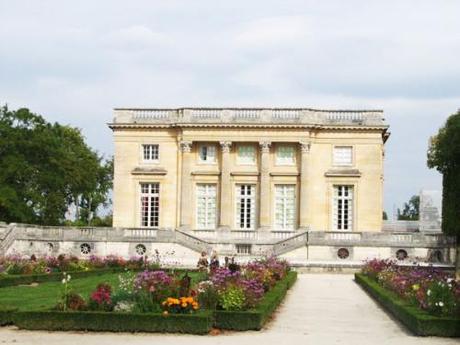
The Petit Trianon is a sumptuous jewelry box of a house, tucked away in the Versailles park. Designed in 1762 by Ange-Jacques Gabriel and paid for by Louis XV, it was intended as a present for Madame de Pompadour – its elegant lines a perfect setting for her own delicate, exquisite beauty. Sadly, however, Madame de Pompadour died before her romantic Versailles hideaway, her maison de plaisance in fact, was completed and instead it ended up in the hands of her successor, Madame du Barry, who despite the lurid tales attached to her background, had some seriously good taste in art and furnishings going on.
However, the Trianon’s most celebrated owner is of course Marie Antoinette and it is to her memory that the building is dedicated today, which is tough cheese for its other famous female inhabitants over the years, which range from Pauline Bonaparte to the Empress Eugènie, who was obsessed with Marie Antoinette and had the Petit Trianon restored to how it would have looked during her residence there.
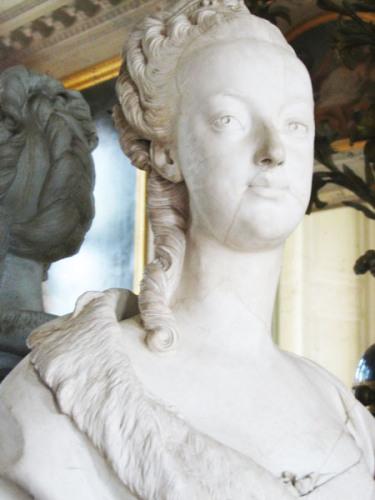
Intended as a gift from a royal lover to his mistress, it is perhaps fitting that the Petit Trianon should have been one of the first and most important presents given by Louis XVI to his wife after his succession to the French throne in 1774. Madame du Barry had been summarily dismissed to court, her star very decidedly fallen now that her royal protector (who had been taken ill with the disease that killed him while being entertained by her at the Petit Trianon) had passed away.
‘Vous aimez les fleurs. J’ai un bouquet à vous offrir,’ Louis reportedly told the no doubt thrilled Marie Antoinette, who was just nineteen years old, as he presented her with the key of the Petit Trianon. It was intended to act as her own private domain where she could be free from the constraints of the dreaded Versailles slavery to etiquette and precedence and enjoy herself in the company of her own close knit group of friends. At first she would visit just for the day but after spending some nights there while recovering from a bout of scarlet fever in 1779, she began to gradually increase the amount of time she spent there until eventually whole weeks would go by without her setting foot in the main palace.
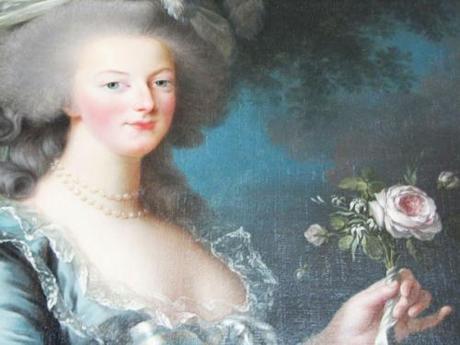
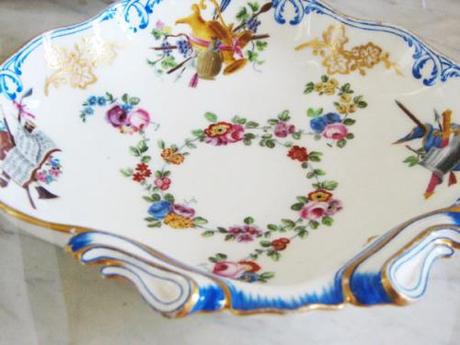

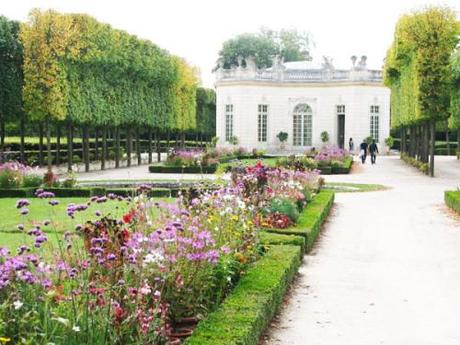
Perhaps it would have been better for Marie Antoinette if she had not had the Petit Trianon to retreat to as a lot of the rumours that would tarnish her name over the following decades had their root in her intensely private and some believed scandalously informal lifestyle there, but the Revolution was always inevitable and who would seriously begrudge her the happiness that she found at Petit Trianon over the years?
It’s easy to see why Marie Antoinette lost her heart to the Petit Trianon though – built along the lines of a small and compact chateau and exquisitely decorated in light, fresh colours, it is the perfect size for a tiny court with only enough bedrooms to house the Queen, her children and a couple of her closest companions, which included her sister in law, Madame Élisabeth, the Duchesse de Polignac and the Princesse de Lamballe. As with all the royal palaces, there was a special Trianon Livery – scarlet and white, which was worn by all visiting gentlemen and this would have made a striking spectacle set against the delicate gilded panelling, which had been designed to set off the golden haired beauty of a mistress but was now the backdrop of a queen.
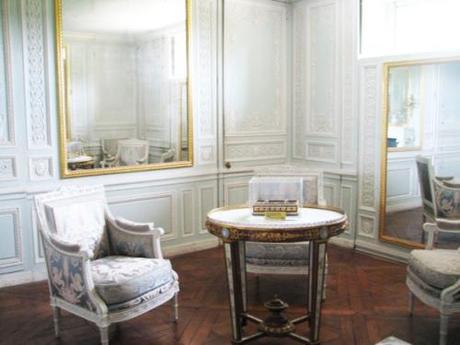
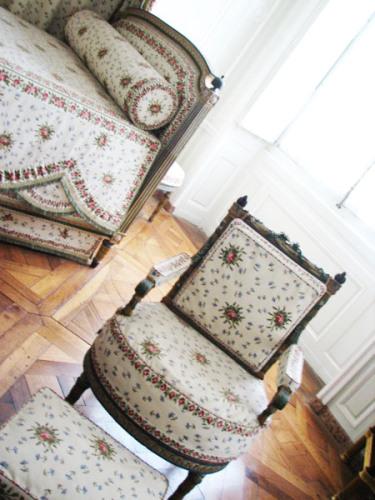
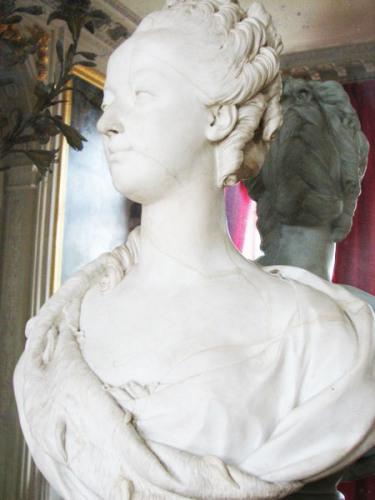

Over the years, Marie Antoinette probably spent her most happy hours at the Trianon either overseeing her extensive (and extremely expensive) plans for the gardens, playing with the animals on her farm, putting on plays before extremely exclusive audiences in her theater and entertaining friends in the beautiful pavilions. Although her world there was extremely private, she did from time to time show especial favour to visiting royalties by throwing wonderful parties in the gardens, complete with illuminations, dancing and fireworks, all carefully orchestrated and planned to highlight the beauty of her personal domain.
It was considered rather scandalous by some that the King himself had to be specifically invited to the Trianon, but this arrangement suited the couple very well. Like his wife, Louis was no fan of the stifling intensity of Versailles life and had his own hide aways in the warren of private rooms and mezzanines that lay hidden behind the state apartments. However, unlike Marie Antoinette, he had been raised at the Versailles court and knew how to play its games, however little taste he might have had for them – his wife, however, had been brought up in the altogether more informal atmosphere (although no less grand) of the imperial court in Austria and the strict and crushing red tape and protocol of Versailles appalled and cowed her from the outset. She needed respite from the burdens of court life and Louis was pleased to be able to present her with one and to adhere to whatever rules she chose to impose on it as well and in fact formal edicts, designed to restrict admittance to the Trianon and protect Marie Antoinette’s privacy were imposed right from the start.
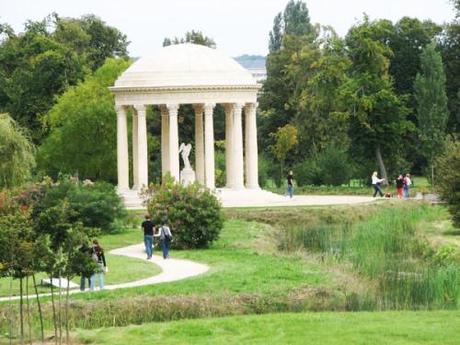
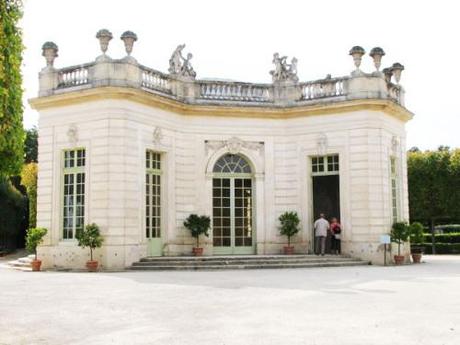
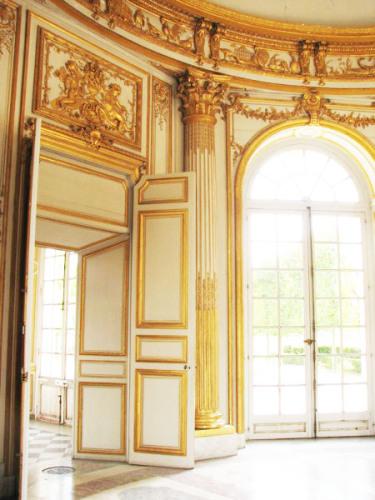
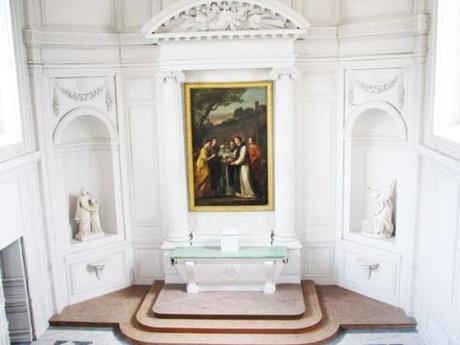
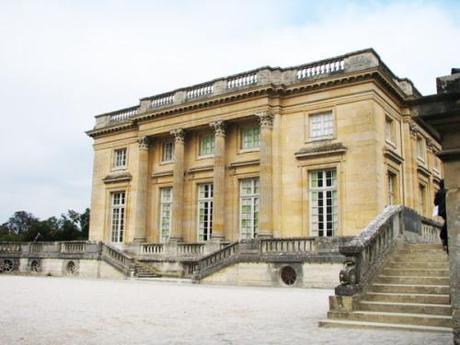
Although the Petit Trianon nowadays is filled with the hubbub of its paying visitors, it’s still possible to imagine how it must have been during the time of Marie Antoinette. There’s still a hint in the still and tranquil air of whispering muslin dresses, muffled laughter and fingers trailing across harpsichords and perhaps it is no wonder that the famous Moberly-Jourdain Incident of 1901 centred on the Petit Trianon, which although far too lovely and peaceful to be properly ‘creepy’ still retains a certain vibe from its eighteenth century heyday.
The rooms of the Petit Trianon remain one of the most perfect examples of late eighteenth century design and mark the moment when the rococo frivolity of the mid part of the century began to give way to the more austere beauty of the neo-classical. Keen to stamp her own personal taste on the building, Marie Antoinette very deliberately eschewed the grandeur of nearby Versailles and instead filled her rooms with pale greens, blues and pinks and hung soft painted muslins at the windows and around her bed. The paintings too were a mixture of romantic classical scenes and portraits of her own brothers and sisters, most of whom she would never see again. Rumours spread across France that the Petit Trianon was a temple to excess with diamond encrusted panelling and all manner of lavishness to frame the orgies of the woman they viewed as a Courtesan Queen. The truth was actually very different, although her critics would probably have had heart attacks if they’d known how much she was squandering on the gardens rather than the actual decor of her house, which remained a simple and unstuffy antidote to the stifling splendours of Versailles.

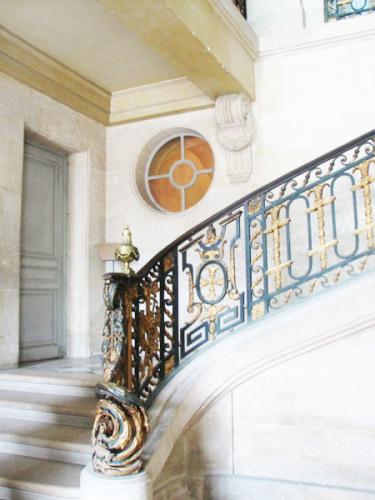



To underline the difference between Versailles and the Petit Trianon, Marie Antoinette also dressed completely differently there – eschewing the powdered coiffures, stiff panniered gowns and jewels that formed her court attire and instead favouring softly flowing silks and her favorite muslins and un-powdered loosely dressed hair styles and straw hats. Obsessed with theatre, it must have seemed natural and perhaps even comforting to Marie Antoinette to don different costumes for what she must increasingly have seen as her two completely different lives – as the elegant and sparkling Queen of France and also the private individual, tending her flowers and flock in a muslin dress and straw hat at the Petit Trianon.
It was at the grotto in the gardens of the Petit Trianon that Marie Antoinette was informed in October 1789 of the huge mob of women (and men dressed in women’s clothing) that was marching on Versailles. When she hurried back to the palace that day, did she take one last look over her shoulder at her house and wonder if she would ever see it again? It seems unlikely – events moved with such ferocious speed that she probably had no presentiment of what was about to occur and that within a matter of days, she and her family would be on their way to Paris, leaving Versailles and the beautiful, private world that she had created for herself at the Petit Trianon behind forever.
******
Set against the infamous Jack the Ripper murders of autumn 1888 and based on the author’s own family history, From Whitechapel is a dark and sumptuous tale of bittersweet love, friendship, loss and redemption and is available NOW from Amazon UK, Amazon US and Burning Eye.
‘Frothy, light hearted, gorgeous. The perfect summer read.’ Minette, my young adult novel of 17th century posh doom and intrigue is available from Amazon UK and Amazon US and is CHEAP AS CHIPS as we like to say in dear old Blighty.
Cheapest place to buy accutane online buyaccutanerx.comFollow me on Instagram.
